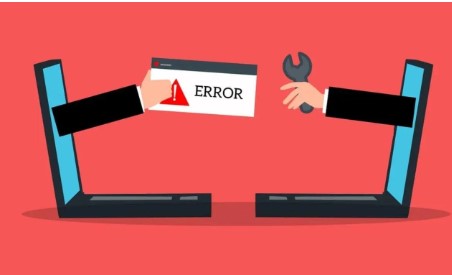Effective Troubleshooting Guide for ” errordomain=nscocoaerrordomain&errormessage=could not find the specified shortcut.&errorcode=4 ” Error

Introductio of errordomain=nscocoaerrordomain&errormessage=could not find the specified shortcut.&errorcode=4
Encountering the “Could not find the specified shortcut.&errorcode=4” error can be frustrating, especially if you’re unsure what caused it or how to resolve it. This issue often arises in various contexts, such as software installations, application launches, or system operations. In this guide, we’ll walk you through the common causes of this error and provide practical steps to fix it.
Understanding the “errordomain=nscocoaerrordomain&errormessage=could not find the specified shortcut.&errorcode=4” Error
This error typically occurs when a program or system component attempts to access a shortcut that either doesn’t exist, has been moved, or is corrupted. The error code “4” indicates a specific problem that requires targeted troubleshooting.
Common Causes of the Error
- Missing or Deleted Shortcut: The most common cause is that the shortcut the program is trying to access has been deleted or moved.
- Corrupted Shortcut File: The shortcut file itself might be corrupted, preventing the system from recognizing it.
- Invalid Path: The shortcut may be pointing to an incorrect or outdated file path.
- Installation Issues: Incomplete or corrupted software installations can result in broken shortcuts.
- Registry Errors: Invalid or missing entries in the Windows Registry related to the shortcut can trigger this error.
Read also: learn about 5120x1440p 329 Deus EX Mankind Divided Images
Step-by-Step Troubleshooting Guide
Check for the Missing Shortcut
The first step is to verify whether the shortcut in question exists.
- Search for the Shortcut: Use the search function on your system to locate the shortcut. If found, try opening it manually.
- Restore from Recycle Bin: If the shortcut was recently deleted, restore it from the Recycle Bin.
Verify the Shortcut Path
Ensure that the shortcut points to the correct location.
- Right-click on the Shortcut: Select “Properties” from the context menu.
- Check the Target Path: Under the “Shortcut” tab, verify that the “Target” field points to the correct executable file.
- Update the Path if Necessary: If the path is incorrect, update it to the correct location of the program.
Recreate the Shortcut
If the shortcut is missing or corrupted, create a new one.
- Navigate to the Program’s Directory: Locate the executable (.exe) file of the program.
- Right-click and Create Shortcut: Right-click on the .exe file and select “Create Shortcut.”
- Move the Shortcut: Place the newly created shortcut in the desired location, such as the desktop or start menu.
Repair or Reinstall the Program
If the error persists, the program associated with the shortcut may need to be repaired or reinstalled.
- Go to Control Panel: Open the Control Panel and select “Programs and Features.”
- Find the Program: Locate the problematic program in the list.
- Repair or Uninstall: Choose “Repair” if available, or uninstall and then reinstall the program.
Check and Fix Registry Entries
If the issue is related to the Windows Registry, you may need to fix or clean the registry.
- Open the Registry Editor: Press
Win + R, typeregedit, and press Enter. - Navigate to Shortcut Key Entries: Look under
HKEY_CLASSES_ROOT\lnkfileor related entries for missing or corrupted keys. - Backup the Registry: Before making any changes, back up your registry by selecting “File” > “Export.”
- Repair or Restore Entries: Correct any incorrect entries or restore the default values.
Use System File Checker (SFC)
System File Checker can repair corrupted system files, including those that may cause this error.
- Open Command Prompt as Administrator: Search for “cmd,” right-click, and select “Run as administrator.”
- Run SFC Command: Type
sfc /scannowand press Enter. Wait for the process to complete.
Preventing Future Errors
- Regular Backups: Regularly back up your shortcuts and registry settings.
- Maintain Software Updates: Ensure that all programs are up-to-date to prevent issues related to missing or corrupted shortcuts.
- Use Reliable Software: Use trusted software for cleaning and maintaining your system to avoid corrupting shortcuts or registry entries.
FAQs
What does errordomain=nscocoaerrordomain&errormessage=could not find the specified shortcut.&errorcode=4 mean?
Error code 4 typically indicates a problem related to file paths or missing shortcuts. It often arises when a program cannot find the file or location it’s looking for.
How do I fix a corrupted shortcut?
You can fix a corrupted shortcut by deleting it and creating a new one. Alternatively, you may need to repair or reinstall the associated program.
Why do shortcuts get corrupted?
Shortcuts can become corrupted due to improper software installations, file path changes, or system errors. Using unreliable third-party software can also lead to shortcut corruption.
Can I recover a deleted shortcut?
Yes, you can recover a deleted shortcut from the Recycle Bin, or by creating a new one from the program’s executable file.
Is it safe to edit the Windows Registry to fix this error?
Editing the Windows Registry can be risky if you are not experienced. Always back up the registry before making any changes, and proceed with caution.
What should I do if the error persists after trying these solutions?
If the error persists, consider seeking help from a professional technician or contacting the software’s support team for further assistance.
Conclusion
The ” errordomain=nscocoaerrordomain&errormessage=could not find the specified shortcut.&errorcode=4 ” error can be a nuisance, but with the steps outlined in this guide, you should be able to resolve it effectively. By understanding the causes and applying the appropriate fixes, you can get your system or program running smoothly again. Regular maintenance and careful monitoring can also prevent such issues from recurring.




